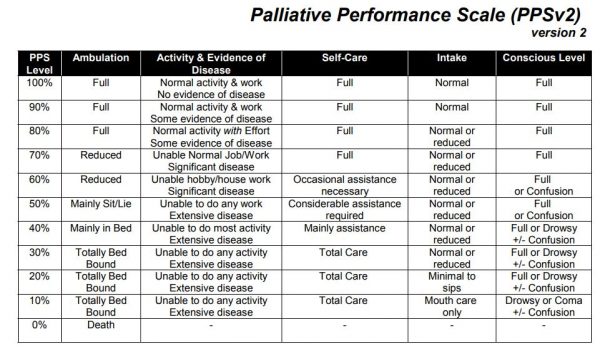
Claims-based audits are rising, causing an increase in administrative overhead that many hospices cannot afford. Experts say the key factor to curb these audits is accurate hospice eligibility. As a result, experts are warning hospices to enforce a tighter review process with clear documentation of tools used.
Understanding whether a patient has a chronic or terminal illness can help your hospice avoid unwanted scrutiny, and it begins by using the building blocks of the Local Coverage Determinations (LCDs).
Four Tools to Determine a Chronic or Terminal Illness
Evaluate all current and potential patients for hospice eligibility with these four assessment tools:
- Palliative Performance Scale (PPS)
- Karnofsky Performance Scale (KPS)
- Functional Assessment Staging Tool (FAST)
- New York Heart Association (NYHA) Staging
When using these tools, it is vital for hospice clinicians to understand these are intended to be functional assessments. The patients’ abilities are being evaluated; seeing what they can do themselves is important for a clear assessment.
Interview the family, the facility workers and caregivers on the patient’s health history and progress. Since you are looking for a decline to justify hospice eligibility, history is important with these scales to chart what their normal activity is versus what they can do now.
The Interdisciplinary Group (IDG) should evaluate each patients’ scores as a team to offset any fluctuations, discrepancies and instances where a topic was not scored. Be consistent with this practice.
For patients who are not hospice eligible and perhaps have a chronic illness, it is advised to recommend or provide palliative care as an appropriate service.
Understanding How to Use the Palliative Performance Scale
PPS is one of the most commonly used tools for documenting a decline in functional status because it is more accurate for determining a prognosis rather than a diagnosis.

Clinicians will start at the first column on the left of the chart, watching the patient perform each task on their own and using 10% increments to score, based on skill level.
Skills measured in PPS:
- Ambulation
- Activity and Evidence of Disease
- Self-Care
- Intake
- Level of Conscious
Each level of functionality is clearly marked with a number. If levels are all at different numbers, it is advised to use clinical judgement and “leftward precedence” to determine the overall score.
In future blogs, we will explain how to use the remaining LCD tools to determine hospice eligibility, as well as signs to look for to measure eligibility for neurological, cardiac and respiratory disease patients.
For an in-depth examination of chronic versus terminal illnesses, including case scenarios to practice skills, watch these webinars with California Hospice and Palliative Care Association (CHAPCA) and Axxess.
Axxess Hospice, a cloud-based hospice software, includes built-in documentation capabilities for Clinical Evaluation/LCD Visits to help with detailed reporting histories for each patient.
